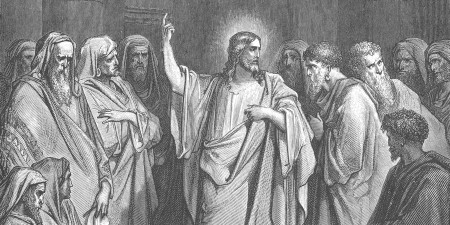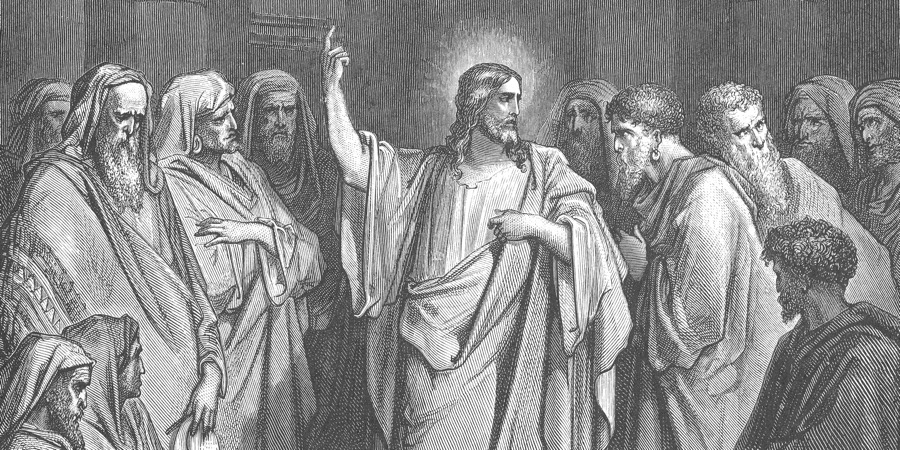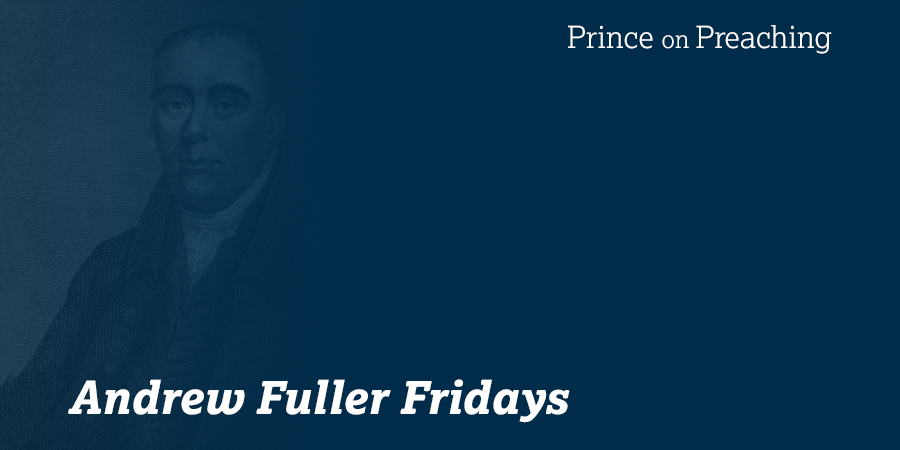
Graeme Goldsworthy is retired lecturer in Old Testament, biblical theology, and hermeneutics at Moore Theological College in Sydney, Australia. Goldsworthy is a Reformed, evangelical Anglican scholar who spent many years in full-time pastoral ministry. Arguably Goldsworthy’s most influential book, Preaching the Whole Bible as Christian Scripture: The Application of Biblical Theology to Expository Preaching, was published in 2000. Prior to this volume, Goldsworthy wrote a series of biblical theology monographs for a popular audience in order to fill a perceived void in classroom literature. He notes,
Indeed, biblical theology should be a core subject in all ministerial training, and it needs to be the heart of our preaching and of all Christian education in the local church. Yet it would seem that much academic theology has come to be self-serving, and its function to build up the church of God has been largely lost (“Biblical Theology in the Seminary and Bible College” (paper presented at the Gheens Lectures of The Southern Baptist Theological Seminary, Louisville, KY, March 19, 2008), 7).
Goldsworthy’s According to Plan: The Unfolding Revelation of God in the Bible was published in 1991 as a whole Bible biblical theology written in the context of and for the benefit of the local church. The entire book was “tried out chapter by chapter on several successive groups of ordinary church members” (“Biblical Theology in the Seminary and Bible College,” 8). Goldsworthy traces his interest in evangelical biblical theology and Christocentric interpretation and preaching through the tradition of Vos and Clowney, although most directly through Donald Robinson, his teacher at Moore College in the late 1950s (“Biblical Theology in the Seminary and Bible College,” 5-7).
Summary
The work of interest here is Goldsworthy’s pivotal text of biblical theology, Preaching the Whole Bible as Christian Scripture. Goldsworthy’s goal for Preaching the Whole Bible as Christian Scripture “is to provide a handbook for preachers that will help them apply a consistently Christ-centered approach to their sermons” and “to understand the place of the gospel in expository preaching” (Preaching the Whole Bible, ix, 95). Although Goldsworthy’s target audience is “theologically trained pastors,” the intentional lightness of its jargon maximizes the accessibility of the text. He has included some of the more technical discussion and references and footnotes and he also provides a substantial bibliography.
The book has eighteen chapters divided into two major sections. The first section treats basic questions about the Bible, biblical theology, and preaching in an attempt to reveal the inseparable connection between them for faithful expository preaching (1-132). The second section applies biblical-theological principles to the various genres of biblical literature, concluding in the final chapter with a discussion of how to teach biblical theology in preaching (133-256).
Preaching the Whole Bible as Christian Scripture begins with an argument for the centrality of the gospel sourced in 1 Corinthians 2:2: “For I decided to know nothing among you except Jesus Christ and him crucified” (5-6). Goldsworthy is concerned that, too often, preaching literature is “predominately weighted toward matters of effective communication and methods of sermon preparation” and tends to ignore biblical theology altogether (7). He argues for the unique authority of the Bible and its organic unity, which Goldsworthy asserts “has been under attack since the Enlightenment in the eighteenth century” (15). Goldsworthy argues that the Bible expresses its organic unity in Jesus Christ, who is “the central character” who “sums up and fulfills all that has gone before in the Old Testament.” Thus, the central question for the preacher should be “How does this passage of Scripture, and consequently my sermon, testify to Christ?” (19).
Goldsworthy briefly recounts the history of the biblical theology movement and distinguishes it from the discipline of systematic theology (22-29). He explains, systematic theology “is concerned with establishing the Christian doctrine of any topic on the Bible” whereas biblical theology “is concerned with how the revelation of God was understood in its time, and what the total picture is that was built up over the whole historical process” (26). He also contends that any book that only deals with one of the Testaments can only be considered a biblical theology up to a point. He writes, “But, if what we have said about the Bible and the nature of biblical theology is valid, then, by definition, a theology of either the Old or New Testament is not really a biblical theology” (63).
Goldsworthy affirms Geerhardus Vos’s definition of biblical theology as “that branch of exegetical theology which deals with the process of the self-revelation of God deposited in the Bible” (Vos, Biblical Theology: Old and New Testaments, 5; Preaching the Whole Bible, 22). He writes from within a conservative evangelical perspective and is a harsh critique of neo-orthodox historical-critical elements within the biblical theology movement. More simply, Goldsworthy says that biblical theology “involves the quest for the big picture, or the overview, of biblical revelation,” which one must understand in light of Jesus, “the final and fullest expression of God’s revelation of his kingdom” (22, 25).
Goldsworthy argues for a Christ-centered biblical-theological view of preaching method based on three concepts: the Bible as the Word of God, Jesus as the Word of God, and the apostolic model of preaching:
The prophetic word prepares the way for the incarnate Word of God. After his ascension the ministry of preaching is the appointed means for the continuance of this saving principle. But since Christ is the creating word, proclamation that fulfills God’s purpose is only ever the word about Christ. How does our preaching testify to Christ? That is the solemn and challenging question that we cannot avoid (45).
Goldsworthy contends that the best argument for the validity of evangelical biblical theology is Christ’s own approach to the Scripture (47). Goldsworthy asserts that Jesus was a biblical theologian (46). Contrary to many contemporary scholars and biblical theologians, Goldsworthy maintains that there is a single controlling theme in the Bible: the kingdom of God (51-53). Goldsworthy rightly understands that suggesting “God” as the single controlling theme of Scripture is bland because “’God’ is a three letter word without specific content. God is revealed through his saving work and words. The ontological trinity of systematic theology is not other than the God of the kingdom dynamic who reveals himself in his dealings with his people and, above all, in becoming one of them. The kingdom of God is never abstract because it is both the realm and rule of God.” Goldsworthy is correct in his thinking here and his logic applies to designating “Christ” as the single controlling theme of Scripture as well. Thus, the author affirms the designation kingdom of Christ as the single controlling theme of Scripture.
He avers that a sermon’s value should be evaluated in terms of how well the proclamation testifies to Christ and his gospel. He summarizes,
In short, what is relevant is defined by the gospel; what is helpful is defined by the gospel. The first question we all need to ask is not, ‘Was it relevant?’; ‘Did I find it helpful?’; or ‘Were we blessed?’; but ‘How did the study (the sermon) testify to Christ and his gospel as the power of God for salvation?’” (62).
He argues that one can see the unity of the Bible in the relationship between Jesus’ conviction of the absolute authority of the Old Testament and his self-recognition as the one who fulfills the Scriptures in a way that challenges our understanding of Old Testament prophetic expectations. Thus, according to Goldsworthy, the recognition of the diverse epochal structure of biblical revelation must yield more than convenient categories; it must yield essential interpretive principles based on how Jesus and the apostles viewed their unity. He is critical of Vos, Clowney, and VanGemeren for their treatment of the epochs of biblical revelation. He believes that, while their delineation of epochs identify periods, they do not show the underlying unity of Scripture and the structure of revelation. He writes,
Edmund Clowney follows in Vos’s footsteps and shows some developments and refinements. He defines the redemptive-historical development in terms of the periods marked by creation, the fall, the flood, Abraham, the exodus, and the advent. He does not explain why we would use these parameters, nor how the designated epochs relate. Everybody recognizes that there is development in the biblical message, and listing a series of significant events and people is hardly profound. Periodicity is not the issue. The issue is whether or not the various parts can be said to hang together in some kind of meaningful whole, and, if they do, what kind of unity they form (“Is Biblical Theology Viable?” in Interpreting God’s Plan, 32).
Regarding VanGemeren, Goldsworthy writes,
The epochal structure of redemptive history is more than a convenient way of handling a large corpus, as I am sure VanGemeren would agree. But is appears that his method does not take sufficient account of his own principles, and especially that of the centrality of Jesus Christ. Biblical theology is not a matter of carving the Bible into manageable chunks and then investigation how the various parts relate to one another and especially to the coming of Christ (“Is Biblical Theology Viable?” in Interpreting God’s Plan, 32).
For Goldsworthy, the gospel functions as the hermeneutical key; and, “while there is much in the Bible that is strictly speaking not the gospel, there is nothing in the Bible that can be truly understood apart from the gospel” (95).
Following Donald Robinson, Goldsworthy proposes a three-fold epochal perspective on the whole canon (Robinson, Faith’s Framework: The Structure of New Testament Theology, 71-96). He marks Abraham, David/Solomon, and Jesus Christ as “the key reference points in salvation history” (99). He writes, “This is why I am firmly of the conviction that the three-fold structure taught to me by Donald Robinson is superior to, and more theologically productive than, the structures proposed by Vos, Clowney, and VanGemeren. Donald Robinson has pinpointed the gospel structure in the OT rather than merely a series of consecutive periods” (“Is Biblical Theology Viable?” in Interpreting God’s Plan, 39).
One quibble with Goldsworthy’s structure is that, by beginning with Abraham, he relegates prior revelation to the status of prologue, thereby passing over the Adam/Christ figuration, which shapes our understanding of human identity and destiny and is vital to the epochal structure of the biblical narrative (Gen 1-3, Rom 5:12-21, 1 Cor 15:45-47). The omission is strange, especially in light of Goldsworthy’s commitment to a whole-Bible approach to biblical theology.
One of the most important sections of the book is Goldsworthy’s discussion of typology (109). He defines typology as “the principle that people, events, and institutions in the Old Testament correspond to, and foreshadow, other people, events, or institutions that come later” (111). He laments that contemporary exegetes and preachers view typology with suspicion and urges his readers to utilize not only micro-typology (correspondence between persons, events, and institutions) but also macro-typology (correspondence between whole epochs of revelation). He writes, “If the Old Testament is somehow Christocentric, then it follows that the Bible is structured typologically” (“Biblical Theology and Hermeneutics,” SBJT 10 (2006): 11).
According to Goldsworthy, “The entire epoch of salvation history from Abraham to David and Solomon is confirmed in prophetic eschatology and fulfilled in Christ. All aspects of Old Testament salvation history bear a typological relationship to Christ” (112). This macro-typology provides the gospel basis for the application of any Old Testament pericope to contemporary Christians as mediated through Christ. Greg R. Scharf writes, “His treatment of typology will give the preacher permission to notice and proclaim what is often present in the text but sometimes suppressed as too reminiscent of unacceptable allegorizing” (Review of Preaching the Whole Bible, Trinity Journal 22 (2001): 288). Goldsworthy’s central thesis for the entire volume is grounded in his macro-typology: “It underlines the central thesis of this book: all texts bear a discernable relationship to Christ and are primarily intended as a testimony to Christ” (113).
In response to the question, “Can I preach a Christian sermon without mentioning Jesus?” Goldsworthy counters, “Why would you even want to try to preach a Christian sermon without mentioning Jesus?” and then offers a resounding “No!” (115, 122). He denigrates legalistic, moralistic preaching, which does not understand the ethical demands of the Bible in relation to Jesus and the gospel (118-119). According to Goldsworthy, all true expository preaching is Christ-centered because “No Bible passage yields its true significance without reference to Jesus Christ in his gospel” (122).
The second section of the book applies biblical theology to preaching. Goldsworthy explains how texts from all biblical literary genres should be understood in their own biblical-theological context as a witness to what God would finally do in Jesus Christ. Goldsworthy defines literary genre and discusses it in relation to salvation history and biblical epochs (137-139). These are the epochs Goldsworthy lists: “The kingdom revealed in Israel’s history,” “The kingdom of God revealed in prophetic eschatology,” and “The kingdom of God revealed in the fulfillment of promise and prophecy in Jesus Christ” (139). This Kingdom-oriented epochal structure provides the macro-typological context of biblical interpretation, which allows the interpreter understand the text in the “framework of history and theology” and provides a link to the contemporary hearer (139).
Goldsworthy’s ecclesiological drive has forced him not to be content with abstract musings about biblical theology. He writes,
I have never really considered myself to be an academic. During my working life, I have spent more years in full-time pastoral ministry than I have in full-time theological teaching. I mention this only to emphasize that my passion for the discipline of biblical theology is not driven by the academy so much as by the perceived pastoral need for ordinary Christians in churches to be better able to understand the Bible (“The Necessity and Viability of Biblical Theology,” paper presented at the Gheens Lectures of The Southern Baptist Theological Seminary, Louisville, KY, March 18, 2008, 1).
Goldsworthy writes from the perspective of someone committed to the absolute authority and divine unity of the Bible, which demands a coherent, whole-Bible biblical theology. Thus, Goldsworthy offers a model of viewing every text in the Old and New Testament through an Christological lens. One of the strengths of Goldsworthy’s book is the author’s awareness that the problem of Christless preaching is not restricted to the Old Testament. Frequently, gospel-free sermons emerge from the gospel narratives themselves, their significance reduced to mere moralisms (248).
Evaluation
One of the helpful distinctives in Goldsworthy’s work is that he holds the gospel as the starting point in all biblical interpretation: “Jesus is the sole mediator of the truth of God” (84). Furthermore, “The Bible is the word of God by virtue of its relationship to Christ and not by virtue of its spiritual application to our lives” (113). This Christ-centeredness means that the gospel is the hermeneutical key and the theological center of the entire Bible (86). The issue for Goldsworthy is not the finding of pathways from a text to Christ; the issue is proceeding theologically with awareness that the entire biblical storyline finds its meaning and culmination in God’s final word, Jesus.
Goldsworthy also connects Christ and his gospel to the Kingdom of God as the organizing principle of biblical theology. To assert that Jesus Christ is the theological center of the Bible and the interpretive key of the Scriptures is not simply to speak of his person and work in a static sense; it is to speak of what he has done in ushering in the kingdom and what he will do when the kingdom is consummated. It is the application of Goldsworthy’s macro-typology to preaching that puts the preacher “in touch with Kingdom structures of thought,” as David Peterson has written (Christ and His People in the Book of Isaiah, 18). These epochal kingdom structures assure the interpreter Christ-centered application can spring from every text. It should also be noted that any application of a text that is not mediated through Christ is not interpreted properly and when applied can only produce despair or self-righteousness.
While noting that Goldsworthy rightly identifies a relationship between Christ and his gospel and the Kingdom of God, one must also note one of the weaknesses of his treatment: lack of eschatological focus. He tends to treat redemptive history in a linear way that focuses on understanding the progressive nature of the kingdom of God horizontally, but not vertically. And, although Goldsworthy does acknowledge the hermeneutical primacy of eschatology, his method does not adequately reflect it (91). While championing the kingdom of God as the organizing principle and unifying theme of the Bible, Goldsworthy’s treatment of the kingdom does not reflect the eschatological intrusion that drapes the entire Scripture with the shadow of the kingdom.
Goldsworthy affirms the two-age, “already but not yet” eschatological framework championed by Vos and Ladd but offers little explanation as to how this vision should effect sermon development and preaching. In the epilogue of Gospel-Centered Hermeneutics, Goldsworthy writes, “Gospel-centered interpretation is eschatological, in that the gospel shows that the meaning of every part of the Bible is given its ultimate expression in terms of the final outcome of the gospel—the eschaton” (Gospel-Centered Hermenuetics, (314). One wishes this assertion was in the prologue of Preaching the Whole Bible as Christian Scripture and developed throughout.
As Russell D. Moore has observed, “In Scripture the eschaton is not simply tacked on to the gospel at the end. It is instead the vision toward which all of Scripture is pointing—and the vision that grounds the hope of the gathered church and the individual believer” (“Personal and Cosmic Eschatology,” in A Theology for the Church, ed. Daniel L. Akin, 858). Michael Horton notes, “Taking advantage of the advances in biblical theology, … eschatology should be a lens and not merely a locus. In other words, is affects the way we see everything in scripture rather than only serving as an appendix to the theological system” (Covenant and Eschatology: The Divine Drama, 5). All human history points to, culminates in, and finds its meaning in Christ, the eschatological man, whose casts his shadow on every page of Scripture. Despite some minor deficiencies Goldsworthy’s Preaching the Whole Bible as Christian Scripture is one of the finest resources on Christ-centered preaching.
Other posts in this series:
Evaluating Edmund Clowney’s Approach to Christ-Centered Preaching
Evaluating Bryan Chapell’s Approach to Christ-Centered Preaching
Evaluating Sidney Greidanus’s Approach to Christ-Centered Preaching




